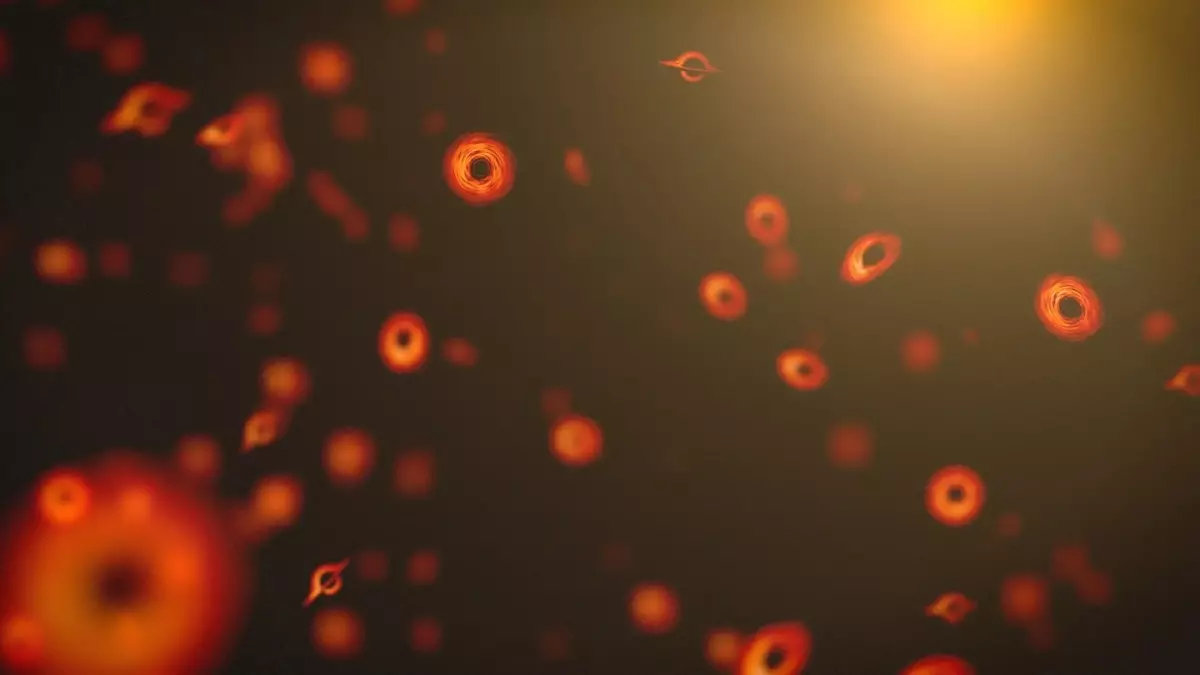In a groundbreaking release from Physical Review D, recent studies suggest that primordial black holes—tiny black holes thought to have originated from the dense regions of the early universe—could be lurking within our solar system. These black holes may hold the key to solving the longstanding mystery surrounding dark matter, which forms 85% of the universe’s visible mass but remains largely unobserved. Unlike their larger counterparts, formed from the remains of dying stars, primordial black holes are hypothesized to be microscopic, possessing masses comparable to asteroids but dimensions akin to that of a hydrogen atom.
The formation of primordial black holes is theorized to have occurred shortly after the Big Bang. As regions of space collapsed under their own gravitational pull, these minuscule black holes sprang into existence. The existence of such objects raises exciting possibilities; they could influence the gravitational dynamics of celestial bodies within our own solar system. Research indicates that their unique characteristics, including speeds reaching up to 200 kilometers per second, may have discernible effects on planetary orbits and the behaviors of satellites.
Dr. Sarah Geller from the University of California, Santa Cruz, has expressed the potential for these primordial black holes to cause ‘wobbles’ in planetary orbits around the Sun. This hypothesis has led to the design of a rigorous modeling initiative that aims to simulate solar system dynamics, meticulously accounting for the gravitational influence of these elusive objects. By understanding how the movement of planets might be affected, researchers hope to gather significant data that could further illuminate the nature of both primordial black holes and dark matter.
Further exploration into the dynamics of these primordial black holes includes an intriguing proposal by Dr. Sébastien Clesse and Dr. Bruno Bertrand. Their approach suggests that subtle alterations in satellite altitudes—caused by the gravitational pull of primordial black holes—can be monitored to provide evidence of their existence. Existing space probes may serve as effective tools for identifying these disturbances, lending an unprecedented empirical approach to the search for primordial black holes.
While these innovative methods represent promising avenues for detection, skepticism still lingers in the scientific community. Dr. Andreas Burkert of Ludwig-Maximilians-University Munich cautions that environmental factors such as solar winds or asteroid interactions could obscure the signature of a primordial black hole’s gravitational influence. Thus, the path toward confirming the existence of these objects will require rigorous validation methods to differentiate between these various gravitational effects.
The ongoing research into primordial black holes not only seeks to unveil new cosmic phenomena but also tackles the vexing enigma of dark matter. The theoretical existence of such black holes underscores the complexity of the universe, where traditional notions of matter and gravity constantly evolve. By exploring the gravitational behaviors rippling through the cosmos, scientists may soon develop answers that reshape our understanding of the universe’s fundamental structure. As more research unfolds, the potential to radically shift our comprehension of dark matter—and thus the universe—remains achingly tantalizing.


Leave a Reply